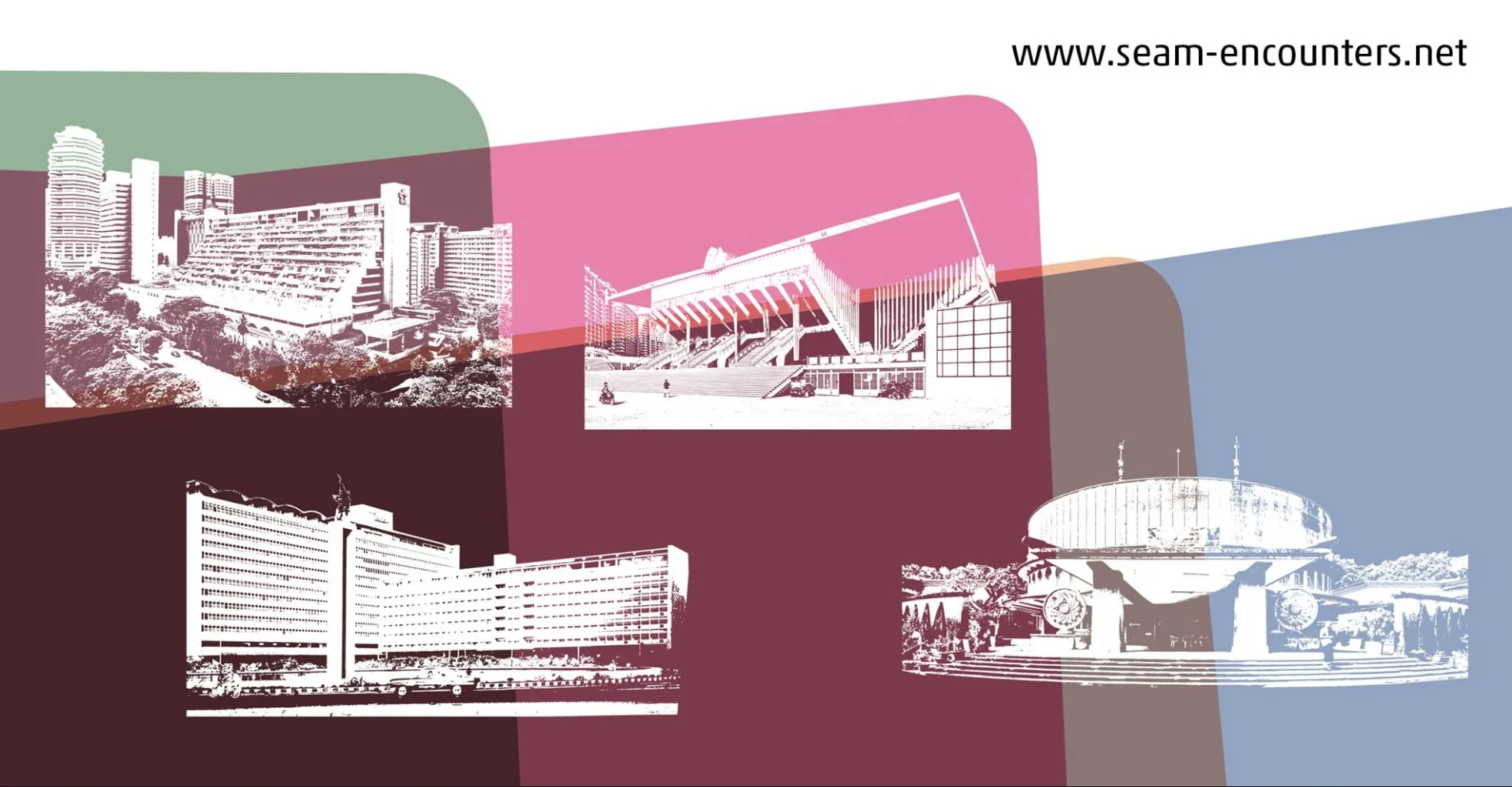UR author Sereypagna Pen at TAK Berlin
Hilary Huckins-Weidner
Sereypagna Pen, co-author of our forthcoming Graham-funded book Genealogy of Basaac, will be a featured panelist in the public prelude to the project “Encounters with Southeast Asian Modernism”.
Encounters with Southeast Asian Modernism sheds light on the history, significance and future of modernism in selected cities of Southeast Asia in the context of the Bauhaus centenary 2019. With partners in Jakarta, Phnom Penh, Singapore and Yangon, Encounters explores the impact of modernism at the crossroads between early globalisation, local conditions, and the search for an own identity, starting with the period of upheaval that accompanied the transition to independence after colonial times.
Full panel list:
Avianti Armand, architect, Avianti Armand Studio, curator, architectural scholar, Jakarta, Indonesia
Puay-Peng Ho, Professor, Head of Department of Architecture, School of Design and Environment, National University of Singapore
Sereypagna Pen, architect, urban researcher, Executive Director of The Vann Molyvann Project, Phnom Penh, Cambodia
Pwint, Professor, Deputy Head of Department of Architecture, Yangon Technical University, Myanmar
farid rakun, artist, researcher and instigator, ruangrupa, Jakarta, Indonesia
Setiadi Sopandi, architect, Indra Tata Adilaras Architects, curator, architectural scholar, Jakarta, Indonesia
Shirley Surya, Curator for Design and Architecture, M+ museum for visual culture, Hong Kong
Lyno Vuth, artist, curator, Artistic Director of Sa Sa Art Projects, Phnom Penh, Cambodia
Johannes Widodo, Associate Professor at the Department of Architecture, National University of Singapore
Win Thant Win Shwin, architect, planner, lecturer at the Department of Architecture, Mandalay Technological University, Myanmar
The panel will be moderated by Ute Meta Bauer, Director of the Centre for Contemporary Art, Professor at the School of Art, Design and Media, Nanyang Technological University, Singapore and Eduard Kögel, curator, architectural scholar, lecturer, Berlin.
Berlin / 30 August 2019 /
TAK at Aufbau Haus
Prinzenstrasse 85 F
10969 BerlinRegistration is free. See full schedule.
Images: Buddhist Library Yangon, National Sports Complex Phnom Penh, Hotel Indonesia Jakarta, Golden Mile Complex Singapore. Graphics: Alexander Lech
Sereypagna Pen is the director of the Vann Molyvann Project and urban researcher based in Phnom Penh, Cambodia. He has been awarded scholarships and fellowships including the Chevening Scholarship (2017–18), US/ICOMOS and East West Center (2015–16), Sa Sa Arts Project (2014–15), Asian Cultural Council (2012–13) and Parsons’ School of Constructed Environments as a visiting scholar (2012). Pen’s work on genealogy of urban form Phnom Penh, genealogy of Bassac, and Phnom Penh visions has been the subject of several exhibitions and presentations in Cambodia and selected venues in Asia, Australia, and the US such as Phnom Penh SaSa Bassac, Art Stage Singapore, Bangkok H Gallery, PARSONS the New School, Taipei Biennale 2016, and Sydney Biennale 2018. He has contributed essays to scholarly journals and books including Cité De L’architecture & Du Patrimoine (forthcoming 2019), Chulalongkorn University’s Nakhara: Journal of Environmental Design and Planning(2015), and Parsons Design Dialogues (2014).
Sereypagna Pen, Schizoanalysis of White Building, 2015, Phnom Penh, Cambodia. © Sereypagna Pen.
Genealogy of Bassac presents a careful architectural study of an area in downtown Phnom Penh constructed on twenty-four hectares of landfill along the swampy floodplain of the Bassac River from the perspectives of artists and residents who have lived through five decades of genocide, exile, return, and eviction. It highlights a new creative generation in Phnom Penh whose emergence is a counter narrative to the current “casino urbanism” of the Cambodian regime.


